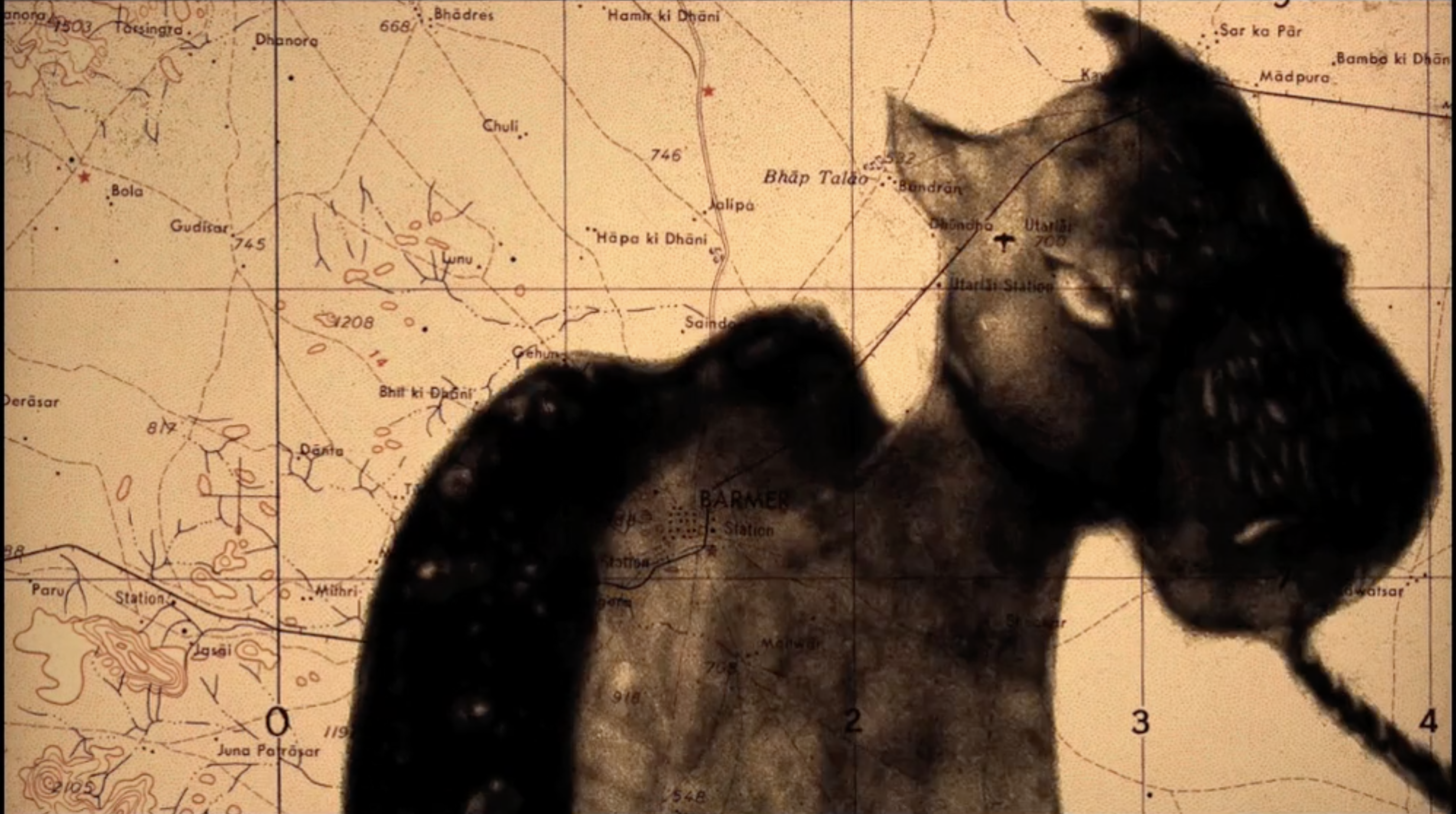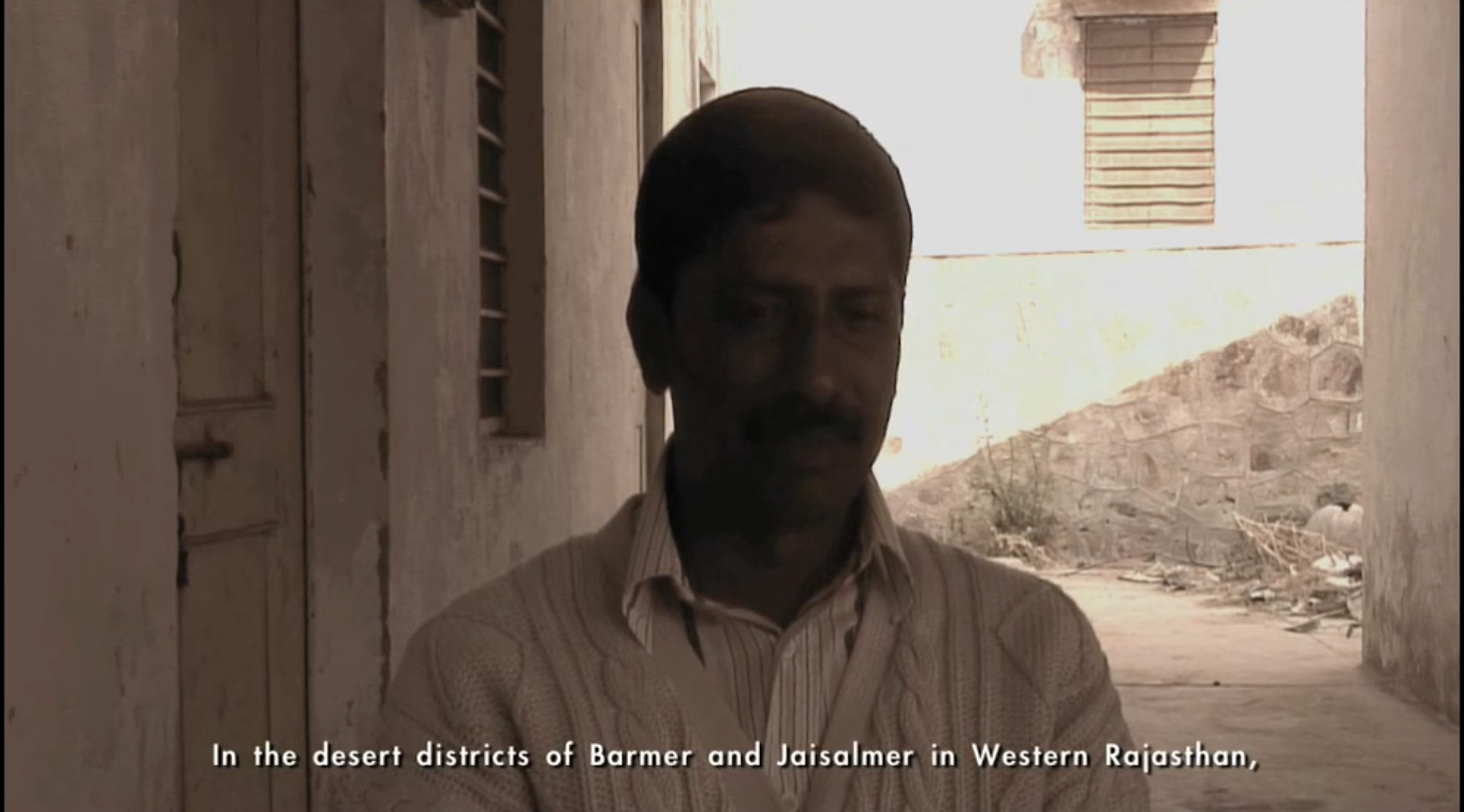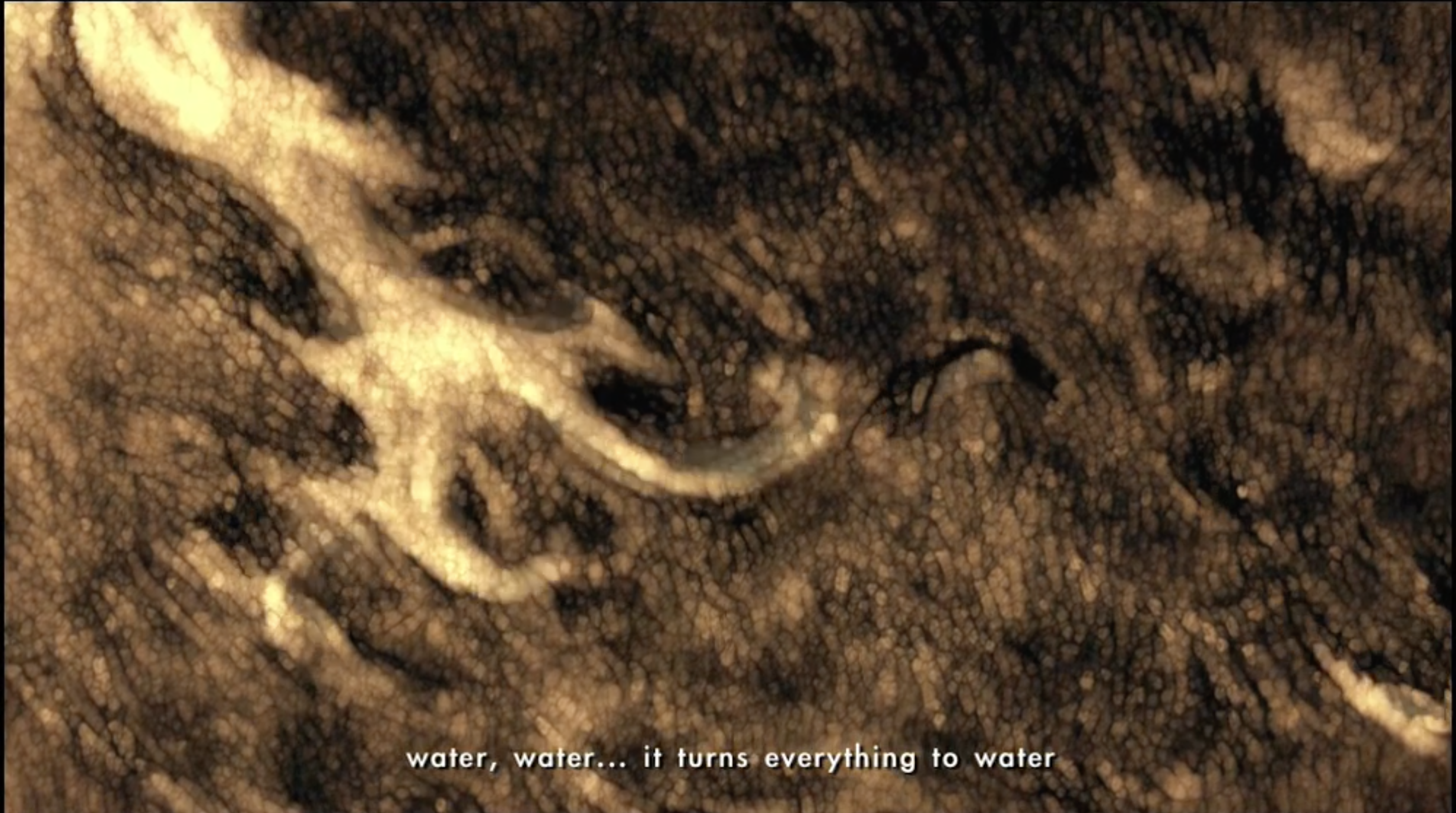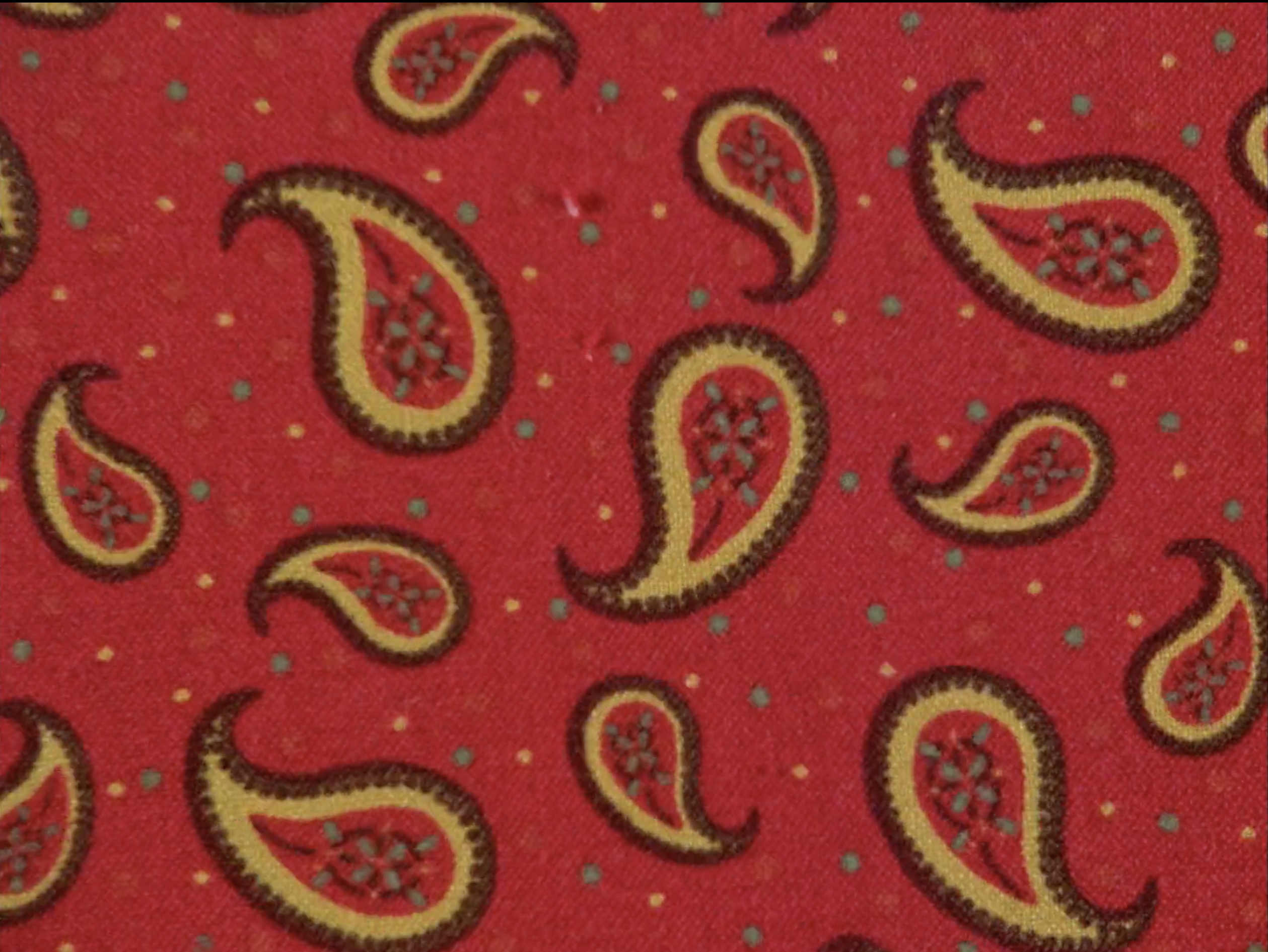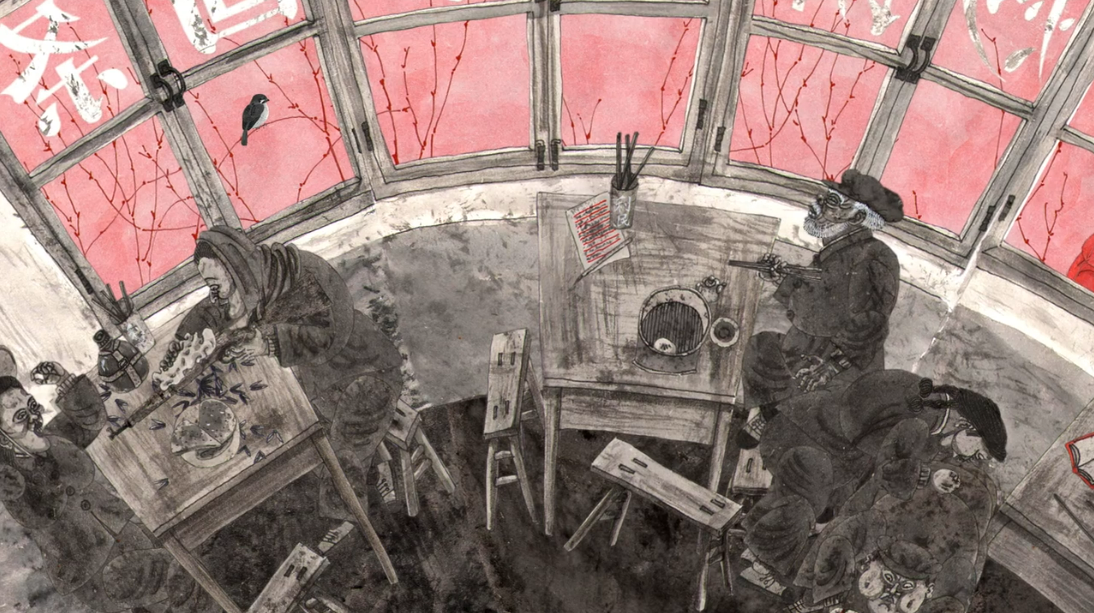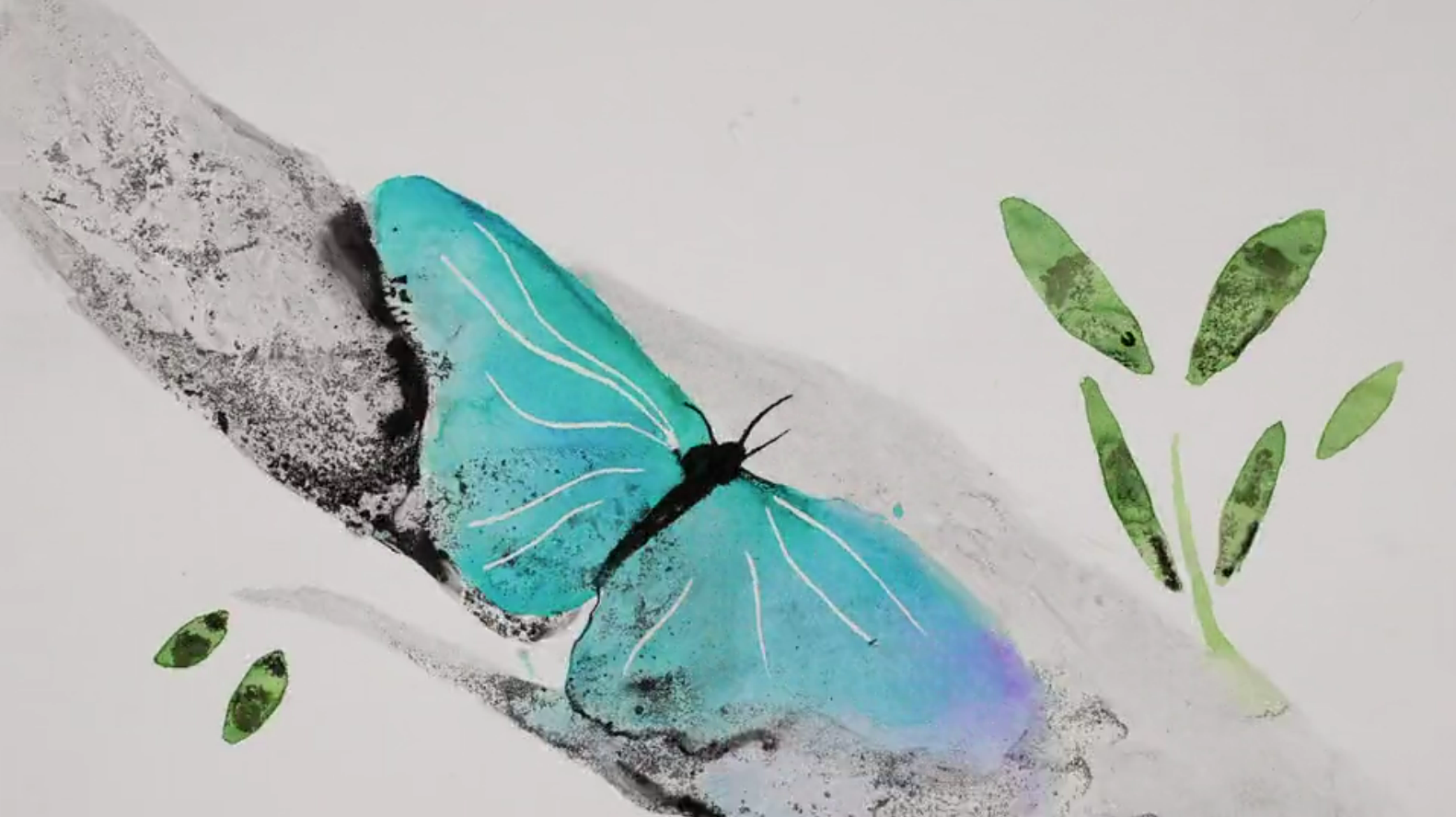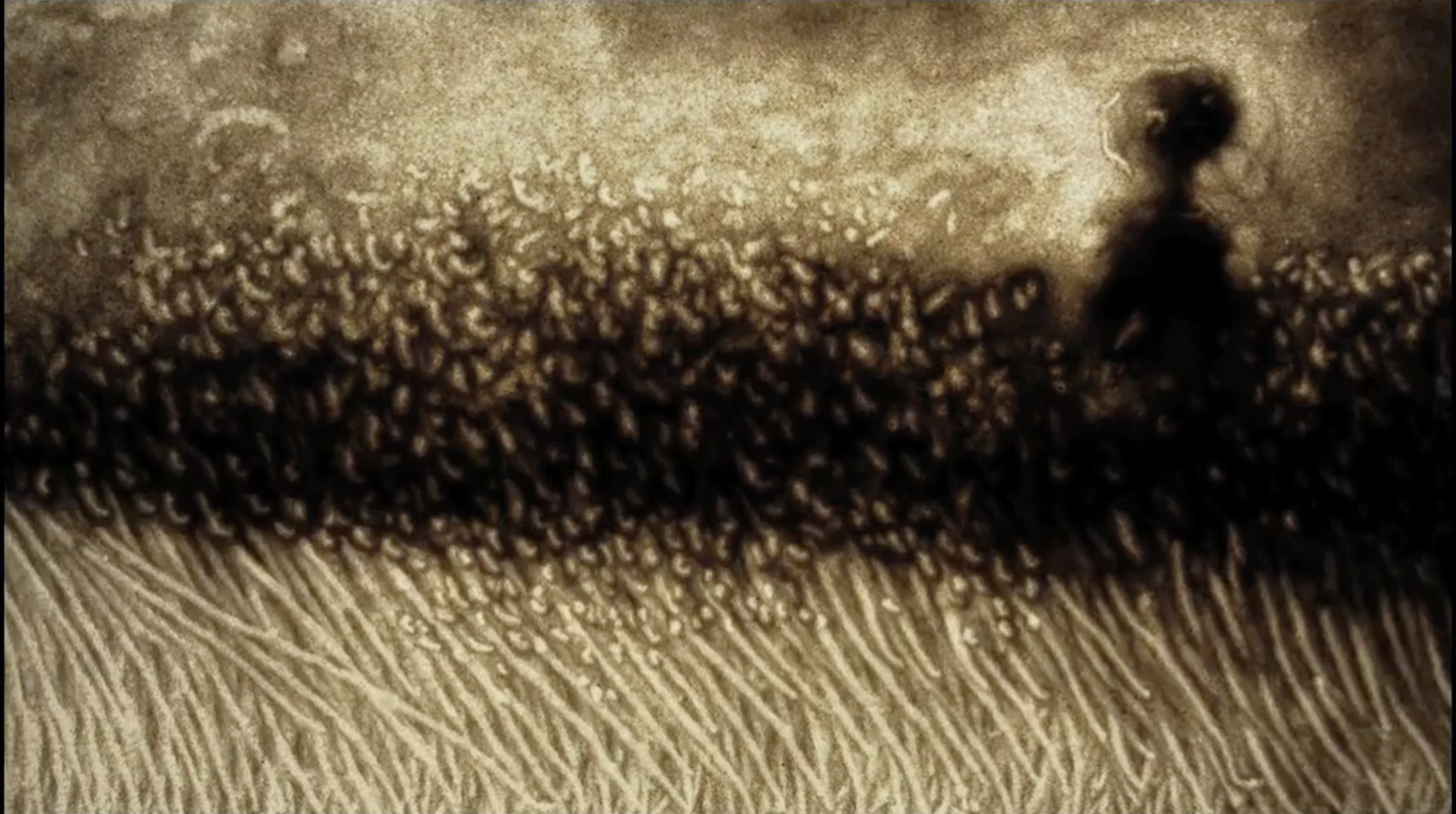
Notes on the film
Flood of Memories recounts the devastating floods in the desert region of Barmer district in Rajasthan during the 2006 monsoons. Displaced community members discuss the history of floods in the region, while survivors of the flood describe their memories and loss of homes and family members. Shifting between recorded testimonies and imagined memories, Flood of Memories combines live-action footage, sand animation, and charcoal animation to evoke the desert landscape and the stories of its people.
Balachandran’s experimental animation techniques involve unconventional layering of sand and charcoal animation with tinted documentary footage. Based on recorded oral histories, Flood of Memories presents its narrators on-screen in several contextual scenes, while their voices carry over additional footage and lengthy animated sequences that reenact some of the stories being told. The film employs sand as a metonymy for the desert landscape, using sand’s fluid and granular qualities to evoke monsoon rainwater and its effect on the region. Clusters and grains of sand are often used to obscure visibility and clarity, mimicking the disorientation of family members seeking, finding, and losing each other in the flooded darkness. Dark clouds of charcoal swarm the screen or dissipate to provide crossfade transitions and leave trails of residue like ghostly memories.
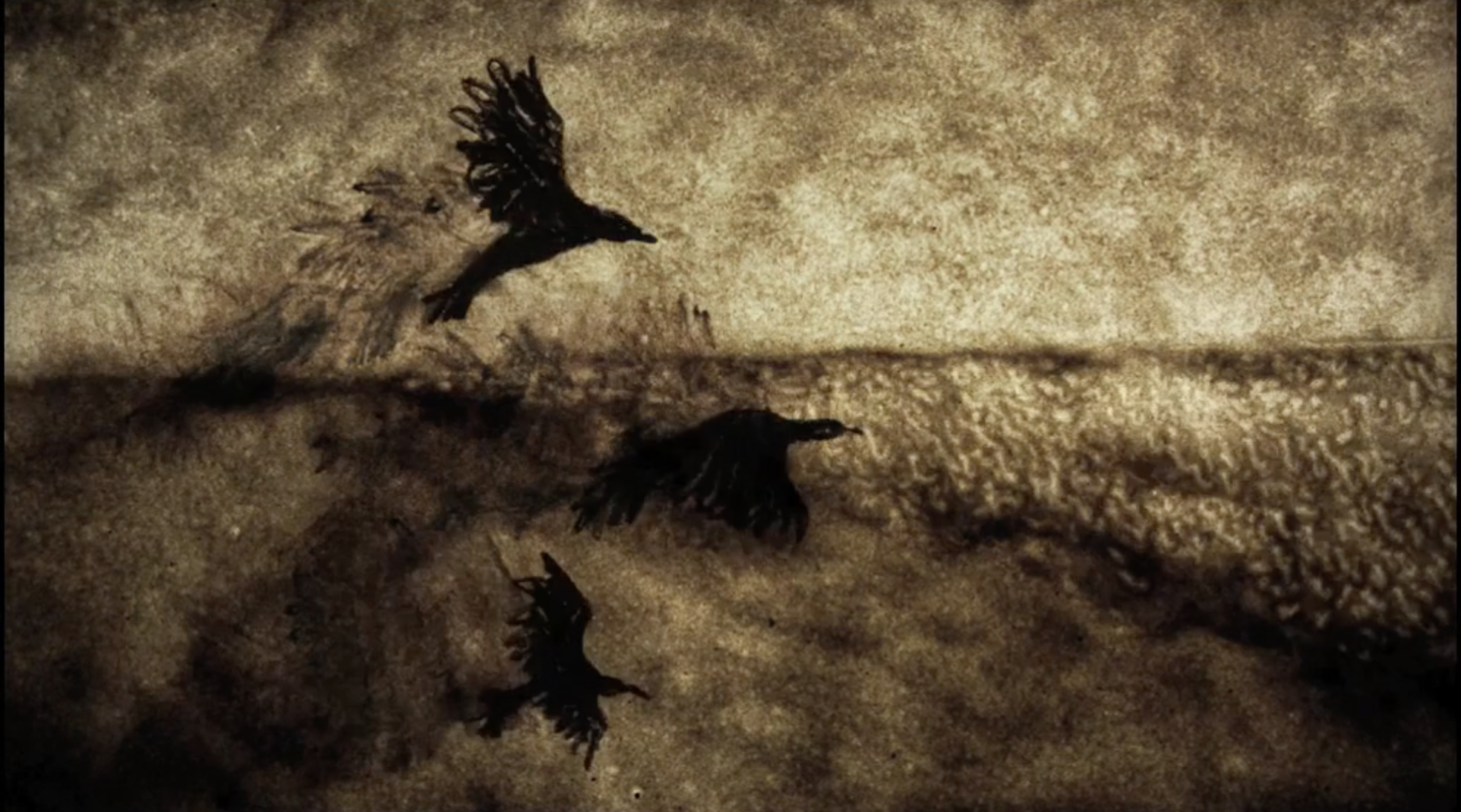
As sand is added or removed on the light table, illumination fades-in or out, in correspondence with narration.
The imagery and treatment of sand in Flood of Memories animates an unstable record of retold events. This strategy allows the filmmaker to document the concrete facts of a specific climate disaster, while prioritizing its emotional and cultural impact on a displaced indigenous community. A closing shot of children silhouettes transforming into departing birds serves as a mournful elegy for missing and lost people.
